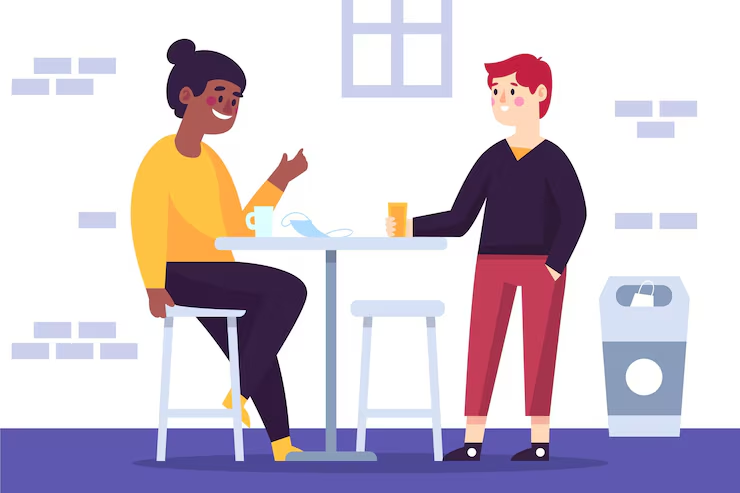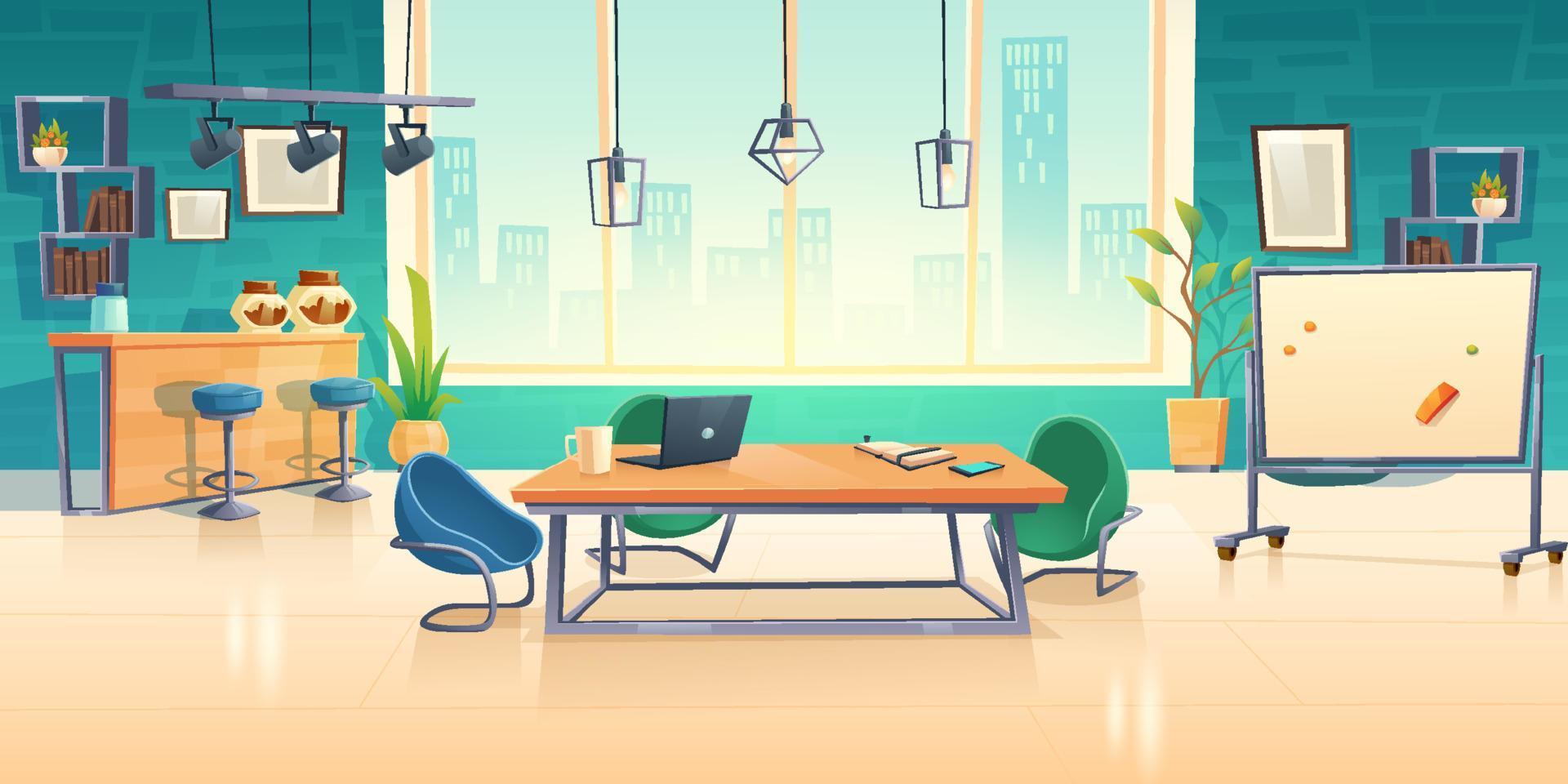Sometimes it’s just to relax; other times it’s basically the only other place to go to to feel secure at your hectic job. Office break rooms at their core are meant to be the new lunchroom. The difference being that the office break room is far more cafe-core. Cafecore is the attribution of a certain cozy atmosphere meant for informal gatherings with welcoming seating and an added warmth you just won’t find anywhere else, especially at the office.
But this also raises the question? When did it become so popular? Is it really that necessary? And what exactly is office breakroom etiquette?
Table of Contents
What’s So Wrong with a Basic Lunchroom?
Once upon a time in Buffalo, New York, both the Larkin and Barcalo Manufacturing Company decided to do something magical. They decided that their workers should start getting free coffee. And it didn’t stop there; Barcalo took things a step further; alongside the free coffee came a paid time slot where workers were allowed to relax and take a break from factory operations. This would be a turning point for workers everywhere, the start of the coffee break as we know it.
Over time the concept evolved until the seismic shift of snacking came into play. Now workers could have lunch during their breaks. And to keep the mess caused by the eating in one place, the lunchroom came into existence. The lunchroom up till the 80s was basically a cafeteria at work where workers could either bring their own homemade lunches or purchase them from the office canteen. It was the pure definition of not much but honest work.
But then in the 90’s another shift happened. Filled to the brim with capital and ideas for a new age, Silicon Valley startups decided to challenge the status quo. If the new workspace was going to be made by nerds, then it may as well be made for the nerds. So they decided to invest their money and effort into spaces that were functional and comfortable, places where one could sit down and chat with friends, another could maybe play games on the beanbag in the corner of the room whilst someone else fell asleep right next to them. All the while everyone could face one another over a nice hot cup of coffee.
Does It Deserve the Investment, Though?
As I’ve said before, the break rooms that Silicon Valley pioneered were something else entirely. For the modern small business, the things being done in 2010 could be seen as a hefty investment today. So why would any sane startup founder or CEO want to invest in a room for RnR? Employees have the weekends and vacation days for that, don’t they?
That may or may not be true; however, one thing is for certain: break rooms, as much as their name might convince you of them being such, aren’t just intended to be there for breaks. They’re also there as a means of communication about work between employees. People will always either talk to one another or talk about one another. It’s what we do. Put us in a small space where we feel at ease, and we tend to spend that time chatting with each other.
Office break rooms are very good at encouraging that kind of behavior, if employees have difficulty working with one another or need to catch up on things that they can’t do during work because they’re busy shouldering their own responsibilities during work; the break room is a great pipeline to get done with the former.
Even Google would agree on this. Former Vice President of People Operations at Google, Laslo Bock, threw out the idea that break rooms should be placed between two separate teams. He said that “At a minimum, they might have a great conversation. And maybe they’ll hit on an idea for our users that hasn’t been thought of yet.” What he meant by this was the fact that these different groups could find a shared commune, and within the commune, the exchange of ideas could result in innovation, giving birth to the start of something greater.
If anything, a break room is one factor in a business that serves as a means of encouraging efficiency rather than detracting from it.
Other Break Room Benefits
Having discussed the perks of the break room in terms of workplace efficiency, it’s imperative that this article also discuss the benefits and virtues of the office break room on the mental health and well-being of workers. If you were to ask anybody if they could, would they do a job for 8 hours straight with no breaks in between, they’d most likely tell you no. That’s because no sane human being in their right mind would be willing to work a 9-5 every day for the rest of their lives without taking a short respite.
In a survey conducted by Tork, 90% of employees feel like they’re happier when they get a lunch break, which is an overwhelmingly large majority of people. A well-designed break room only serves to reinforce this mentality and creates a more positive space.
The reason for the reinforcement is that the design of a break room isn’t meant to be something sterile like an office kitchen space where you would only go to microwave that one sandwich you left in the fridge. Break rooms are hard-coded to be like a fireplace. Warmth, comfort, and a welcoming attitude are the heart of the break room. It doesn’t serve just to give you the satisfaction of taking a break but elevates it, helping employees recharge themselves so that they’re ready to take on the latter half of their day.
Good break rooms are also never far from the office, and they exist with convenience in mind. Employers should want their employees to take breaks so that they can be productive when they come back from said breaks and are healthy. Without the standard that break rooms have set, employees are more likely to quit their jobs due to stress.

Break Room Etiquette
Now break rooms aren’t places where people simply go to relax. They’re also places where folks socialize and talk to one another. What’s always important to consider and keep in mind, therefore, is that despite being a place of relaxation, it is still a place where boundaries must be respected and not overstepped.
For starters, try not to be too messy. The break room is a shared space. Everyone there is going to either be eating, talking, or just taking a nap. When you’re done doing your business, clean up after yourself for the next person. Failing to do so only serves to bring the mood down, and nobody wants to deal with someone else’s spoiled seconds. Also, leaving your mess around only makes the space more unhygienic and can result in the spread of disease.
Secondly, try to be mindful. Yes, the break room isn’t a library, but you should never be talking at a volume that can only serve to disturb others. It must be said, however, that listening to loud music without headphones only serves to disturb the peace even more. As an employee of a company, you are in a professional space, no matter how informal, so try to maintain a level of professionalism in your interactions.
Third, make sure to label your food. If you don’t label your food as yours, you can cause confusion as to whether or not the item in question is yours, if it’s spoiled, or if it’s free food for the taking. On that note though, another thing to keep in mind is that one should never take another’s labeled item without asking first. It’s highly unprofessional and only leads to dissent amongst workers rather than collaboration. On the note of dissent we arrive at our last major don’t.
The break room is meant for work collaboration, not gossip. There are always subgroups and cliques when it comes to any form of social interaction. It’s a given. But those cliques should never lead to gossip and, in turn, drama and then finally conflict. Not only is break room drama bad for everyone in the room, but it’s also bad for the entire company. What happens in the break room only goes on to affect overall company morale. Therefore, it should be best to avoid office drama entirely and focus on the more communal aspects of the break room.
How to Make an Easy Break Room?
Let’s say you are the owner of a small business. You want to make a break room for your 30 employees. You don’t necessarily have the budget to make something as lavish as Silicon Valley, but you want to make an honest effort. What can you do?
An easy way of making a break room is taking an unused part of your office building, say a spare room, that’s spacious enough for at least 10 or so people. Add some furnishings to it. Some potted plants, comfortable chairs, and beanbags will do. Have everything be spaced out enough in a manner so that nothing feels claustrophobic. Make sure you include tables as well in case some people just want to work. Alongside this, add some speakers playing relaxing music to set the mood.
From here, add some snacks and beverages. Dried and/or regular fruit are good, healthy options. You don’t have to have an entire buffet stacked, but make sure there’s water and another side beverage people can make, like coffee. If you include a fridge and/or microwave, that’s just the icing on the cake, because it allows people to refrigerate and heat any of their own food that they’ve brought. Of course, a coffee machine itself is the cherry on top if your business can afford such an expense.
Last but not least, include some form of entertainment like a board game or TV to keep the space lively. The kinds of entertainment you include in the break room influence the kind of company culture that you want to cultivate at your office.
The Final Respite
I think it can be said that office break rooms, ever since they’ve been introduced, have become a staple of the office. Of course, there’s always room for improvement regarding their evolution. If employers keep them in mind, then they only serve to gain from better, more hard-working employees. If you find yourself as one of those employees, give yourself a well-deserved break; you’ve earned it.
For more similar blogs, visit EvolveDash today!
FAQS
- What are some good snacks to keep in the office?
The best snacks are ones that don’t go stale quickly but are cheap, easy, and convenient to eat. This includes nuts, fruits, and popcorn. If you have a fridge, other items and beverages can be stored there.
- I’m scared of socializing in the break room since there are too many people. What do I do?
When it comes to break room socializing, nobody is forcing you, so there’s nothing to worry about. If you really want to avoid people, though, just take a nap until break ends, or schedule your break during a time when nobody else takes it, and you should be fine.
- I have a board game/entertainment system at home. It wouldn’t be unprofessional to bring it to work, would it?
No. Bringing a personal item to the break room isn’t improper; in fact, it can provide some novelty to the place if it feels relevant to the people there. Just make sure that you’re willing to forgo any wear and tear it may receive when being handled by others.



















